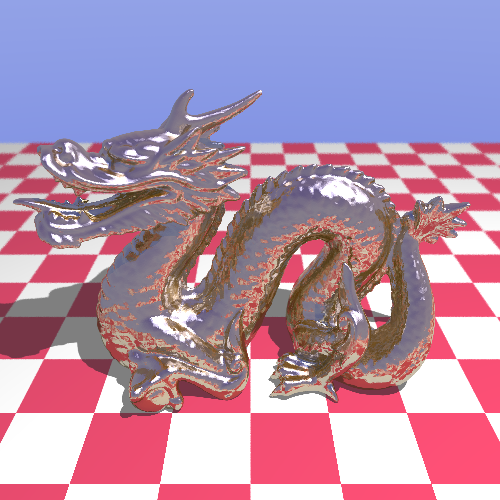Reflections
Until now our materials reflected the light in all directions. Polished materials don’t behave like that, the light is mostly reflected in a single direction. Today we implemented more parameters that controlled this behavior.
When a ray hits a perfectly smooth surface (red), part of its energy is reflected (blue), some other part is refracted (green), and finally a little bit is absorbed (not represented).
We decided not to do refractions because we lacked time. The reflection were fairly easy to implement. We used a recursive function that represented a ray bouncing from triangle to triangle until it reached a maximum number of iterations or did not intersect with anything. Given a normalized ray and a normal vector , the reflected ray may be obtained using the following relation:
We also implemented a specularity feature for shiny surfaces. The simulated light source will appear to be reflected on the surface towards the observer.

As we include more features the images become more and more realistic, such as this metallic dragon.
